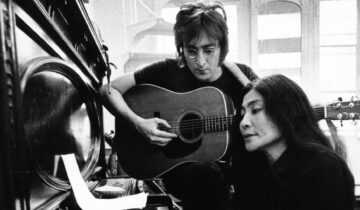The Oklahoma City Museum of Art was the final North American venue for Roman Art from the Louvre. The sixteen-week exhibition, so large it occupied the Museum’s ground floor special exhibition gallery and the eight second floor galleries of the Museum, featured 184 works, some weighing more than 6,000 pounds. An unprecedented exhibition of ancient masterworks, drawn from the Louvre’s unparalleled collection, it provided a rare and historic opportunity for Oklahoma audiences to view these magnificent works.
Organized by the American Federation of Arts and the Musée du Louvre, and selected by Daniel Roger and Cécile Giroire, curators in the Greek, Etruscan, and Roman Antiquities Department at the Louvre, the exhibition featured masterworks that highlight the diversity of artistic production that characterizes Roman art. These exceptional pieces date from the early first century B.C. to the 6th century A.D. Included were a variety of monumental sculptures, sarcophagi, marble busts and reliefs, bronze and terracotta statuettes and implements, jewelry, glass and metal cups and vessels, mosaics, fresco paintings and a cache of more than one hundred major silver pieces from Pompeii.
The exhibition examined the manifestations of Roman public and private life through an exploration of several themes, including religion, urbanism, war, imperial expansion, funerary practices, intellectual life, and family. Roman Art from the Louvre showed the full range of Roman artistry and taste, juxtaposing “official” art with more modest, private works. Roman Art from the Louvre traced the genealogy of the four main Roman dynasties including the Julio-Claudians, the Antonines, the Severans, and the family of Constantine, through an examination of works made between the first century B.C. and the early fourth century A.D. These works illustrated the evolution of aesthetics, as well as the changing social influences under the Roman emperors, who exerted both secular and religious powers.
The diverse artistic influences from the various far-flung regions of the empire were presented in the first section, “Introduction to Rome and Its Empire.” Among the items shown were contemporary renderings of ancient Roman cities, monuments, and landscapes—among them, the Forum of Trajan and the villa Hadriana—by J. C. Golvin, a draftsman and archaeologist noted for his stunning recreations of ancient sites.
Featuring portraits of the emperors Augustus, Marcus Aurelius, Septimus Severus, and Maxentius, the large section titled “The Emperor and His Surroundings” focused on the evolution of taste, aesthetics, and society under the Roman emperors. The ways in which the political and economic powers of the emperors influenced art production across four dynasties was evident in artworks ranging from life-sized marble statues and portrait busts to small bronze figurines.
The exhibition also examined the concept of civitas, or citizenship, and its ramifications, and included a section devoted to non-citizens of Rome: foreigners, freedmen, and slaves. A rich grouping of stelae, friezes, and lamps depicting these heroic figures was a component of this section as was a varied selection of ceramics and mosaics, included to illustrate production techniques and also to represent the working conditions of servants, peasants, slaves, harvesters, craftsmen, and tradesmen.
The portrait busts of anonymous men, women, and children featured in “The Roman Citizen” revealed the styles and fashions popular during the Roman Empire. Clothing, hairstyles, jewelry and other accessories, perfume bottles, and cosmetics were examined within the greater context of the role of women in the Roman Empire. Other topics included the art of Roman portraiture; the Boscoreale treasure; and Hadrian’s Villa at Tivoli and the Maritime Theater.
“Religion and Death” was the final section of the exhibition. Encompassing official religion, private cults, and magic and the cult of mystery, religion had a complex and important role in imperial Rome. The importance to the Roman people of being remembered after death and reminded of the dead was illustrated through a selection of extraordinary monuments with inscriptions, names, and images of the dead. Among the many highlights of the exhibition were busts of prominent Roman leaders, including Augustus, Marcus Aurelius, and Agrippa; statues of Isis, Venus, Minerva, and Bacchus; early depictions of theatrical scenes, portraits of actors, and theatrical masks; military diplomas and army medallions; sarcophagi, urns, and related ritual objects; military diplomas and army medallions; imperial rings, necklaces and earrings; household objects; and relief sculptures depicting scenes from Tivoli.
Roman Art from the Louvre was organized by the American Federation of Arts and the Musée du Louvre and was supported by an indemnity from the Federal Council on the Arts and the Humanities.









